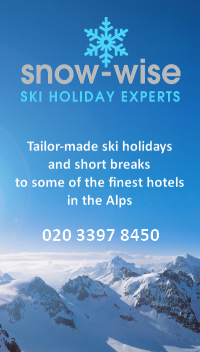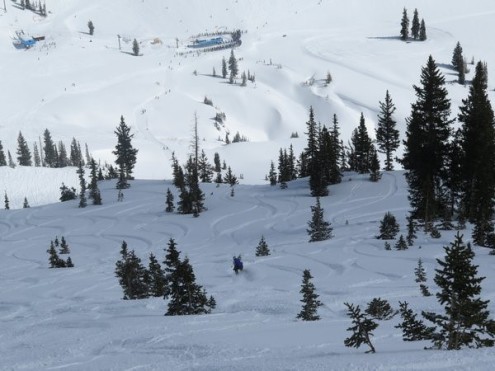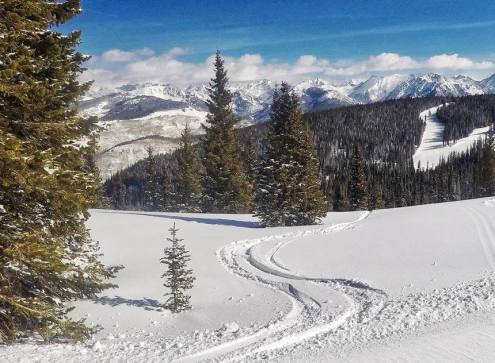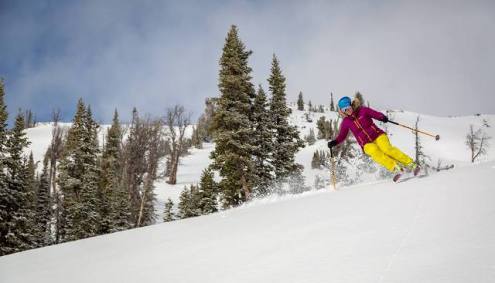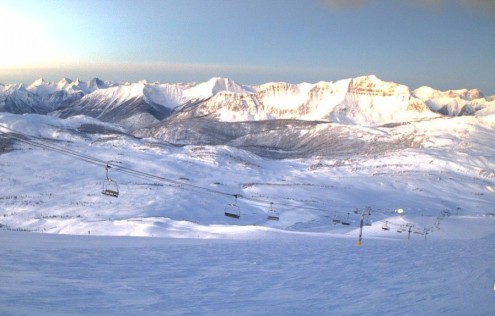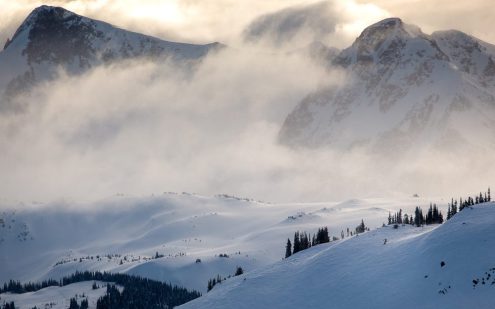Who got the most snow in North America in 2017-18?
Guest feature by Tony Crocker, 26 October 2018
In many ways 2017-18 paralleled the 2011-12 season, with one of the four slowest starts on record for several western regions. Overall it finished at 90% of average vs. 84% in 2011-12 - the difference entirely due to the Northeast’s season being terrible in 2011-12 but above average in 2017-18.
Another commonality with 2011-12 in the West was a mild La Niña, favouring northern regions over southern ones, but to an even greater extreme. Interior Western Canada‘s 2017-18 season rivaled 1998-99 as the best in over 40 years, while the Southwest suffered its worst season since 1980-81, and third worst on record.
California
California also had a tough start to 2017-18. A big November storm rained to 2,800m, bringing substantial snow only to Mammoth, Kirkwood and Mt. Rose, which were about 70% open for the holidays while other areas were only 1/4 open.
December through February had well under half their average snowfall, but the drought was broken decisively with 1-2m of snow at the beginning of March, opening most terrain, and another 3-5m from two more storms later in the month. A rare April tropical storm rained even to above the top of Mammoth, at 3,600m.
Overall, California’s 2017-18 season snowfall was 70% of normal with about 60% of the snow falling in March. Squaw Valley’s upper station led the region with 10.1m (86%) despite the area being only 40% open before the March storms. Heavenly got 7.2m (73%) while Mammoth got 6.3m (70%), and remained open to 17 June.
Utah
Utah had an early season in 2017-18 that was slightly worse than in 2011-12. Alta and Brighton were 3/4 and 2/3 open for the holidays while other Wasatch areas were only half or less open.
January snowfall was also below average, resulting in the first half of the season being the driest here since 1976-77. Fortunately the second half of the season offered good skiing due to average February and March snowfall.
Alta, as usual had the most snow with 9.7m (71%), while Park City had 5.0m (69%) but only reached a maximum of 81% open in early March. Snowbird (8.1m, 64%) closed on 13 May.
Overall, Utah’s 2017-18 snowfall was of 63% of average - the third lowest of the past 40+ years.
Colorado
Colorado’s Front Range and I-70 areas had a poor early season in 2017-18, similar to 2011-12. By New Year, apart from Steamboat and Winter Park which were 3/4 open, no other area was more than half open, and Vail had no more than 1/4 open. Ensuing snowfall along I-70 was close to normal, so terrain opened gradually through January, skiing was good from February onwards and the overall season was 80% of normal.
Areas near the Continental Divide fared best, such as regional leader Winter Park (7.6m, 86%) and A-Basin (6.4m, 81%, closed 3 June). Further west, it was more below average at Steamboat (6.7m, 71%), Vail (5.5m, 61%) and Aspen (4.4m, 69%).
To the south, the early drought was more severe, with no areas over 1/3 open by New Year, and February being the only month with average or better snowfall. In early March, Crested Butte (4.3m, 67%) was a maximum of 62% open while Telluride (4.7m, 67%) was a maximum of 76% open.
The Southwest
New Mexico had its worst ever season by a considerable margin. Taos (2.3m, 36%) was only a quarter open through mid-February and never had more than 44% of its area open.
Overall, Southwest snowfall was 61% of normal, its lowest since 1980-81.
US Northern Rockies
Much of the US Northern Rockies enjoyed an excellent season, with overall 114% of their seasonal average. Montana’s season was comparable to western Canada’s with 10.8m (128%) at Whitefish and 9.6m (131%) at Big Sky.
Further south, snowfall was below average in December and January but still above average in other months at Jackson Hole (9.9m, 106%).
Grand Targhee led the region with 12.9m (109%), while only Sun Valley (4.7m, 95%) was below average, with 40% of its snow coming in March.
The Northeast
The Northeast alternated periods of very good and more difficult conditions, with 105% of its average snowfall overall. The season started well with 1.4m of snow in December, though the weather was bitterly cold during the holidays.
Mid-January rain and a hard freeze limited skiing for the next three weeks. 1m of snow in early February then brought excellent skiing, but the rest of the month had thaw, rain and reduced open terrain. In March, snow from three storms totalling 1.7m made it the best month of the season and resulted in more terrain open than usual in April.
Jay Peak (8.2m, 100%) led the region, while Stowe had 7.0m (90%) and Killington had 5.8m (95%). Areas with above average snowfall included Whiteface (5.7m, 121%) and Cannon (4.8m, 116%).
Interior Western Canada
Interior Western Canada had an outstanding season, at 130% of normal - its highest overall in over 40 years. November was strong, so most areas were 85% or more open for the holidays. January was also big, and no months were below average, so winter conditions prevailed through most of April at the Banff areas.
The 2017-18 season did not set individual records in any resort, but it was excellent across the board, including Big White (9.2m, 128%), Sunshine Village (8.1m, 123%) and Lake Louise (6.4m, 146%). The most snow in the region was at Whitewater (12.6m, 126%) and Fernie (11.7m, 122%).
Pacific Northwest
The Pacific Northwest mostly enjoyed a consistent season, similar to western Canada, with January being the snowiest month - although there were major rain events in both late November and early February.
The area’s overall average of 97% was dragged down by the well below average snowfall at Alyeska (6.5m, 53%) in the far north and Mt. Bachelor (7.7m, 79%) to the south. Areas in between were well above average, including Whistler (12.1m (114%) and Crystal (12.2m, 116%). Mt. Baker led North America in snowfall with 19.3m (116%).
Tony Crocker is an award-winning snow-sports journalist
and founder of www.bestsnow.net - the definitive guide to weather
and snowfall patterns in North American Ski resorts.
Read more about him here
See who got the most snow in North America in other years


